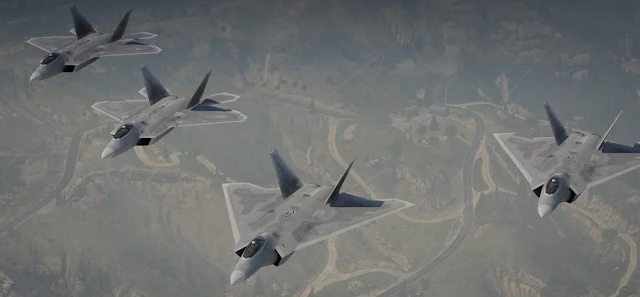 |
| 2 FB-22 (right) and 2 F-22 Raptor (left) /Auto Evolution |
International Military - In 2001, soon after the F-22 Raptor program began, Lockheed Martin began researching and developing a bomber platform from the Raptor design. The bomber named FB 22 takes advantage of the F-22's extraordinary design and capabilities as a fighter with the best maneuverability, even today.
By taking an existing design, the development of the FB 22 will be much faster and cheaper than building a completely new fighter aircraft. The concept, launched in 2002, is a short to medium-range bomber with two seats, supersonic speed and stealth capabilities.
Read Also: Flight Delayed Twice, B-21 Raider Stealth Aircraft Boosts Its Capabilities
In terms of role, the FB 22 will replace the F-111 Aardvark and F-117 Nighthawk. Lockheed Martin has very high confidence in their new bomber, even claiming the FB-22 is even more powerful than the B-2 Spirit, reports Defense View. Stealthier and more agile, the FB-22 can go places the B-2 cannot.
The design of the FB-22 retains the original body of the F-22 Raptor, of course with some modifications. Saying is the USAF wants to keep the stealth capabilities adapted from the Raptor, maybe even better.
Quoted from Military Today, the F-22 Raptor was able to perform under the F-4 Phantom without being detected during the Iraq war. This shows the effectiveness of the stealth capability of the F-22 as an air superiority fighter.
Read Also: US B 21 Raider Stealth Bomber Jet To Fly Soon, China Wary Of Its Capabilities
The FB-22 takes 80 percent of the components from the Raptor, such as the aviation system, software, so it can reduce production and maintenance costs. It is even known that with the original design of the F-22 Raptor alone, it has been spared from a ground attack.
But because of the FB-22 Bomber, there need to be a few things adjusted like payload capacity and range. To address this, Lockheed Martin replaced the F-22's trapezoidal wing with a larger and thicker delta wing nearly three times as large and removed the vertical tail.
With this wing model, the FB-22 gets a significant increase in cruising range as well as its overload. The new FB-22 has a range of 2,570 km to 3,380 km equipped with external fuel tanks.
Like other stealth-capable bombers, the FB-22 can carry a large number of weapons with or without the feature.
Read Also: Flight Delayed, B-21 Raider Predicted To Fly In 2023
The FB-22 can carry a payload capacity of 6.8 tonnes in stealth configuration and 13.6 tonnes in non-stealth configuration. With this increased amount of capacity, the FB-22 can carry up to 30 small diameters like the GBU-39, even bunker-busting bombs weighing over 2 tons.
While retaining an internal missile stash like the F-22, the FB-22 can carry air-to-ground missiles. And because it had a larger body and weight than the original F-22, the new bomber required a more powerful engine.
As Military Today says that the FB-22 is powered by two Pratt & Whitney F135 engines developed for the F-35 Lightning II. These two engines can propel the Fb-22 to reach and maintain a speed of up to Mach 1.92 (2 370 km/h).
Quoted from 19FortyFive, the simple reason why the development of this formidable bomber was canceled.
Read Also: Home Bomber The US and China Plan to Develop a New Stealth Fighter Bomber, What About Russia?
First, because the US Air Force (USAF) wants a bomber that has a wider range of capabilities. With a range of over 3,000 km, the FB-22 may be suitable for flying in regional areas from bases in Europe or the Middle East.
However, base options in the Pacific will be limited to a few island bases that prove particularly vulnerable to ballistic missile attacks. The USAF needed a bomber capable of crossing the oceans for a worldwide strike, as the B-52, B-1 or B-2 could.
Although the USAF was able to acquire a bomber much cheaper than the heavy bombers they had. But trying to duplicate this FB-22 would backfire the US Air Force with two long-term problems.
The first is to remember that the development of the FB-22 is the result of "cheating" from the F-22 Raptor. This means that the computer systems and data links are from the 90s, which is incompatible with the far superior modern network combat systems.
Read Also: US Air Force Needs More Powerful Fighter Planes to Penetrate Enemy Territory
The second problem stems from the very expensive layer of radar-absorbing (stealth) material that requires intensive maintenance. For this reason, the USAF is more focused on developing the F-35 with modular panels that are much more cost-effective.
